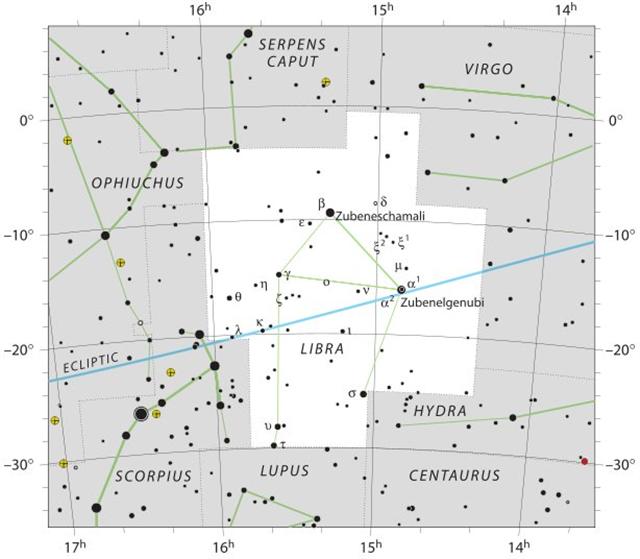I am hesitating whether I should continue to use or not the manzil dates copied from Wikipedia. They could be misleading. Let's therefore resume improving the Wikipedia manzil structure:
For the manzil Az Zubana Wikipedia has given as ruling star Acubens. In my star list this name is used for α Cancri. But α Cancri (135.0) is rising much too early for Az Zubana and ought instead to be between An Nathra (ε Cancri) and Aterf (λ Leonis):
Probably the correct ruling star for Az Zubana is α Librae (Zuben Elgenubi):
"Chilmead's Mizan Aliemin [for α Librae] is from an Arabian title for the constellation; yet that people also knew it as Al Kiffah al Janūbiyyah, the Southern Tray of the Scale, from which came the Arabo-Latin Kiffa australis of modern lists; and as Al Wazn al Janūbiyyah, the Southern Weight, distorted by Riccioli into Vazneganubi. The Lanx meridionalis of two centuries ago is synonymous with the first of these Arabian designations. The alphas and β constituted the 14th manzil, Al Zubānā, although Al Bīrūnī said that this title should be Zaban, 'to push', as though one of the stars were pushing away the other (!); while α marked the nakshatra Vicakha, Branched, under the rule of Indragni, the dual tutelar divinity Indra and Agni. This lunar station was figured as a decorated Gateway, and in later Hindu astronomy its borders were extended to include γ and ι, thus completing the resemblance to the object for which the asterism was named; ι was the junction star with Anuradha. These same stars marked the sieu Ti, Bottom, anciently Dai, and still earlier I shi, some Chinese authorities adding δ, μ, and ν. The two alphas were the determinants of the 21st Babylonian ecliptic constellation Nūru-sha-Shūtu, the Southern Light; and some have included β and γ with them in the Euphratean Entena-mas-luv, the Star of the Tail-tip; as though they marked that part of the enormous, but undetermined, ancient Hydra of Chaldea, the very early Afr of Arabia. Oppert considers them the Idχu [the Eagle] that others apply to the star Altair." (Allen) Thus we are back to Altair. I think this star was significant because in rongorongo times it could have marked the final (the 'Tail-tip') of summer around 10 months (300 days) from March 21:
| |||||||||||||||||||||||||||||||||||||||||||||||||||||||||||||||||||||||||||||||||||||||||||||||||||||||||||||||||||||||||||


